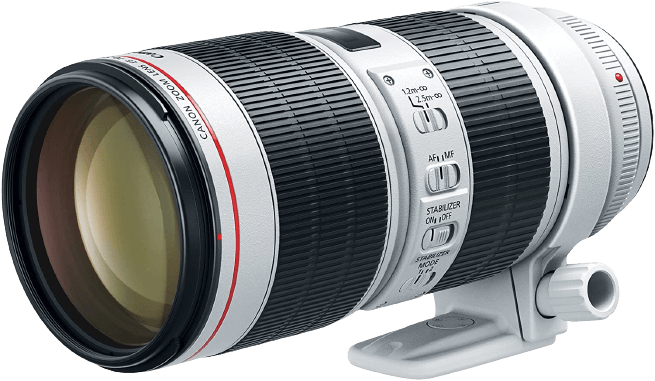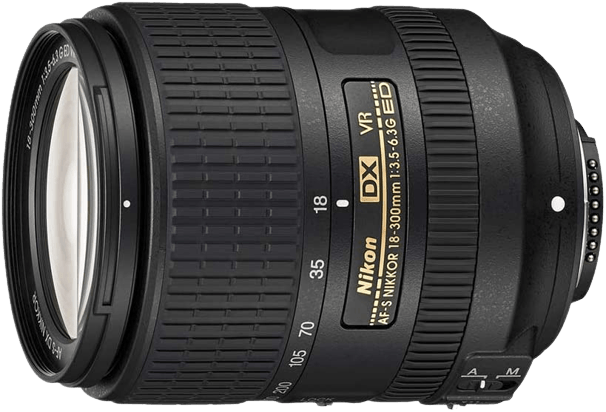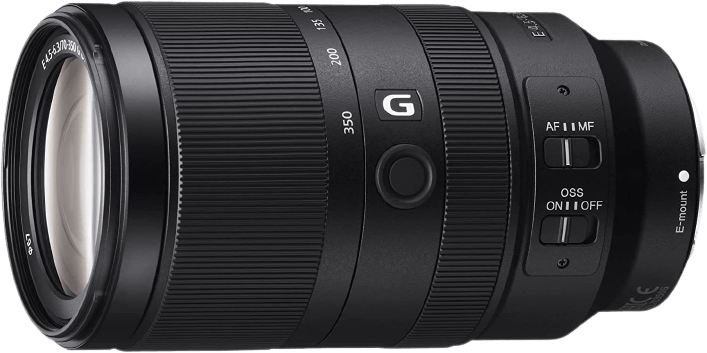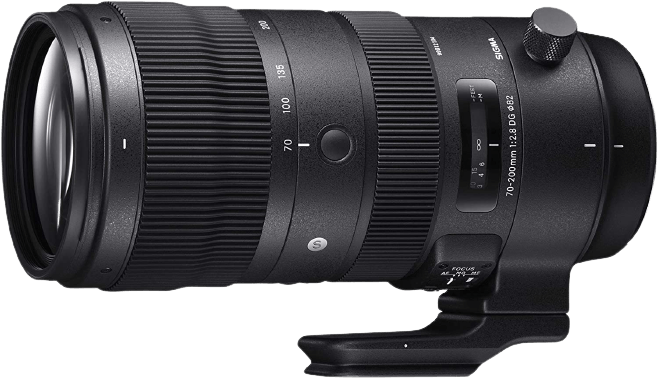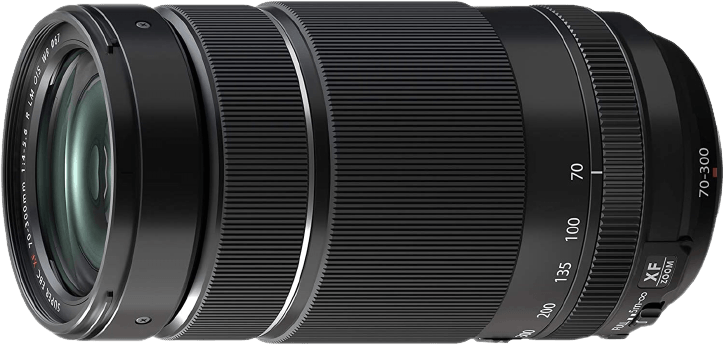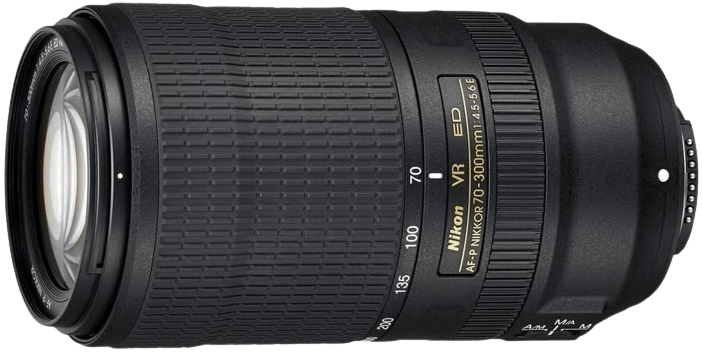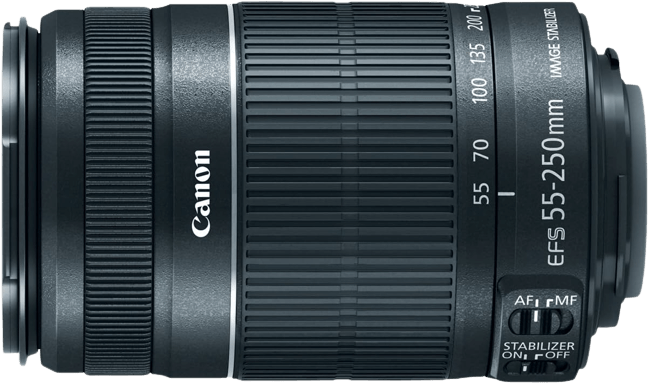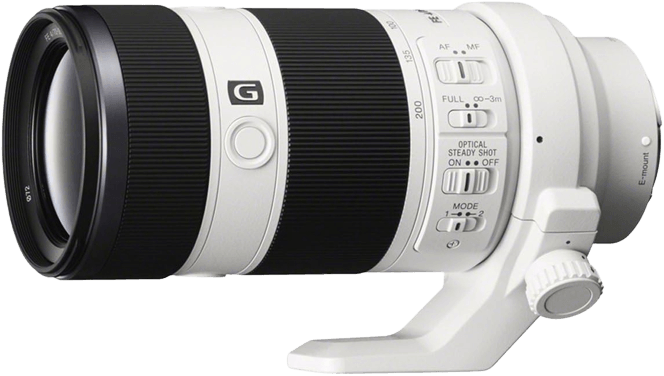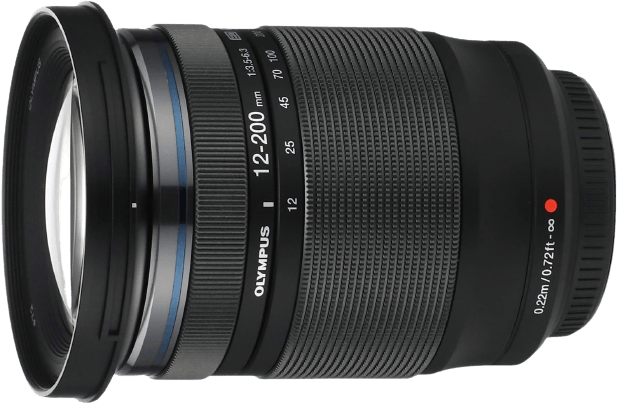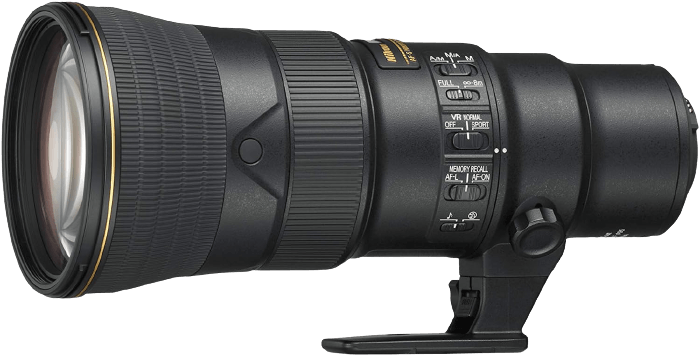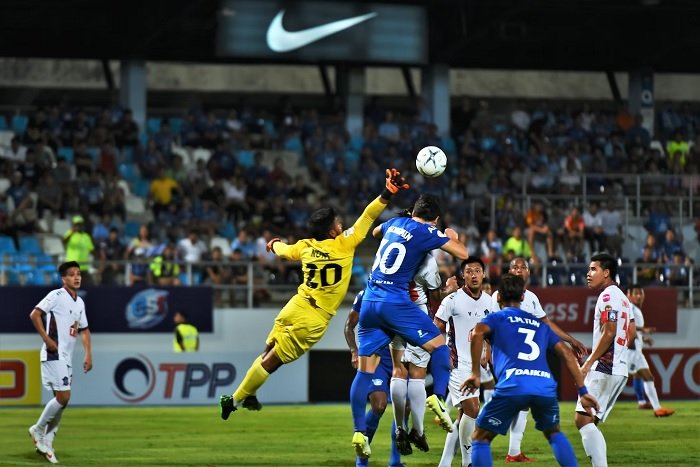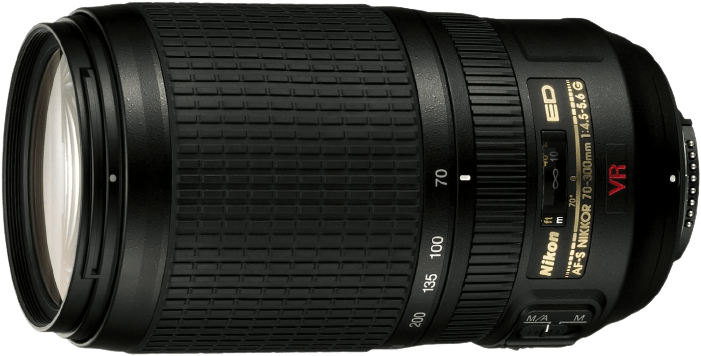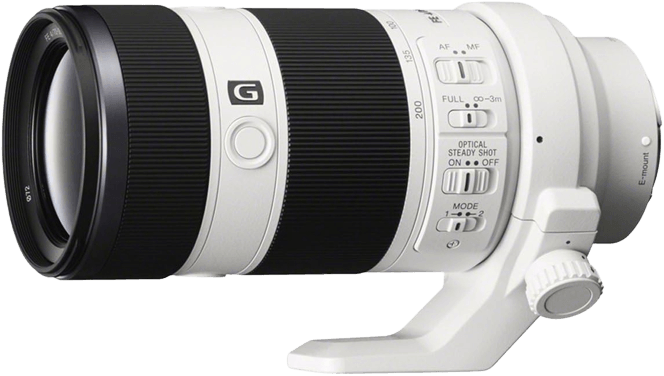The Canon EF 70-200mm f/2.8L IS III USM is our top lens for sports photography. It has the all-round qualities you need to succeed as a sports photographer. It’s fast. It has image stabilization. And it has a zoom range to get you close to the action. But we also list fantastic Nikon, Sony, and Fujifilm sport photography lenses. [Note: ExpertPhotography is supported by readers. Product links on ExpertPhotography are referral links. If you use one of these and buy something, we make a little bit of money. Need more info? See how it all works here.]
What’s the Best Lens for Sports Photography?
Here’s a quick rundown of our selected best lenses for sports photography. It’s a brief look at each lens so you can find the sports photography lens that suits you. There are lenses by Canon, Nikon, and Sony. But we also include other brand options, including third-party lenses.
Features of the Best Lens for Sports Photography
Finding the best lens is a good step in your sports photography career. If you still need more information to choose a lens, we give you the information below for you to select a lens for sports photography. If not, jump to the next section where we closer look at each lens.
A Telephoto Zoom Lens for Sports Photography
A telephoto zoom is the best lens for photography. A telephoto lens has a large focal length range. That means it has the power of magnification. It gets you closer to far-off subjects. That’s ideal for sports photography. You can get prime telephoto lenses. But they have a fixed focal length. A prime lens with a 200mm focal length gives you good magnification. But you have to move to change the distance. A 70-200mm zoom lens allows you to adjust the focal length anywhere in that range. So changing the focal length zooms in or out.
Best Focal Length on a Lens for Sports Photography
A large focal length and zoom range give more shooting options. Versatile sports photographers often use something close to 70-200mm lenses. Professional sports photographers may opt for prime lenses with longer focal lengths and fixed apertures. These provide higher-quality images. But they are a lot more expensive. But 200mm gives you an excellent level of magnification. You can capture sporting action from the stands. And the 70mm focal length is wide enough for environmental shots and good for sports portraits. You don’t need 70-200mm exactly. But something in that region gives you the magnification and variety of shots sports photographers need.
Image Stabilization on a Lens for Sports Photography
An image stabilization system is handy for sports photographers. Telephoto lenses are very sensitive to movement when you use them at the higher end of the focal length. An image stabilizer helps to reduce the effects of camera shake. Image stabilization also allows you to use slower shutter speeds with less risk of blur. That’s ideal for night matches and indoor sporting events. It also helps because telephoto lenses often have slow max apertures. Image stabilizers are handy. But they’re not essential for all sports photographers. Many cameras have built-in image stabilization. That means you can use a lens without stabilization and still achieve sharp results.
Max Aperture on a Lens for Sports Photography
The max aperture is important in any lens. The lower the f-stop is, the more light it allows. A lower max aperture, like f/2.8, gives you more options in low-light situations. And you can use faster shutter speeds for action shots. While an f/4 max aperture isn’t bad, an f/2.8 gives you more light to work with. A lens with a lower max f-stop is better in low-light conditions. It’s something to consider if you want to shoot night sports or indoor events.
The Best Lens for Sports Photography in Detail
We’ve included lenses for Canon, Nikon, and Sony cameras. There’s an APS-C and full frame option for each brand. There’s also a Fujifilm and an Olympus lens. And we’ve included Sigma’s best lens from their sports range. The Canon EF 70-200mm f/2.8L IS III is a versatile sports photography lens for Canon cameras. Some sports photographers need a longer focal length. But the f/2.8 aperture gives you more freedom with your exposure settings to capture action shots. The build quality is excellent. It has weather sealing. And the image stabilization keeps your photos sharp. The 70-200mm focal length range is exactly what a versatile sports photographer needs. The 70mm end is great for wider environmental shots. You can even snap portraits of athletes. The 200mm end provides the magnification you need to get close to the action from the sidelines. The optical quality is excellent. The lens has 23 glass elements arranged in 19 groups. The lens uses Canon’s Air Sphere Coating (ASC) to reduce ghosting and flare. That gives you edge-to-edge sharpness throughout the zoom range. The Canon lens uses an Ultrasonic Motor (USM) for the autofocus. It’s quick and reliable. And an important feature for some sports photographers… it’s quiet. You can get the shot you want when the sport requires silence, like golf, tennis, or ballet. The durability of this telephoto lens is another selling point for sports photographers. Its rugged construction makes it highly resistant to dust and water. It’s not completely waterproof. But you can keep shooting when the weather takes a turn for the worse. This is the best sports photography lens if you have a Nikon APS-C DSLR camera. It has a large zoom range, which is ideal for a variety of sports photography shots. It’s compact for a telephoto lens. And it’s one of the best value lenses on this list. The Nikon AF-S DX 18-300mm f/3.5-6.3 VR lens gives you an incredible range. You can shoot wide stadium shots with the 18mm focal length. It gives you a lovely 76-degree viewing angle for tighter spaces. Then the 300mm magnification gets you onto the pitch from the stands. No sporting moment is out of reach with this lens. Lenses can be very sensitive to movement when at their longest focal length. You can use a monopod for extra stability. But the Nikon AF-S DX 18-300mm has a built-in vibration reduction system. This helps limit the effects of camera shake, giving you sharper images. Nikon doesn’t make low-quality lenses. And this lens is the perfect blend of precision engineering and affordability. It’s compatible with cameras like the Nikon D3500, D500, and D7500. This lens is a must-have for sports photographers with an APS-C Nikon. Sports photographers with a Sony crop sensor camera need this lens. The Sony E 70-350mm f/4.5-6.3 ED G has the beautiful build quality you’d expect from the Sony G series. It gives you fantastic magnification. And it has one of the best AF systems on any telephoto lens. It has a max focal length of 350mm. So you can capture goal-line action from row Z. The large zoom range means you can shoot everything from stadium shots to portraits. Plus, the 7-blade diaphragm helps give you a beautiful background bokeh. Sony cameras have excellent autofocus systems. And this lens improves AF performance even further. The XD linear motor is fast and accurate, even with moving subjects. It’s exactly what you need with fast sporting action. And the focus mode switch makes it easy to change to manual focus. Chromatic aberration is a rare occurrence with this lens. The image quality isn’t in question. And the dust- and moisture-resistant design makes it ideal for outdoor sports. As a Sony E lens, it’s compatible with cameras such as the Sony a6400 and a6600. Sigma has bridged the gap between third-party and branded lenses. They are no longer the also-rans of the lens world. And the Sigma sports range can compete with the best lenses. The Sigma 70-200mm f/2.8 DG OS is the best lens from that range. The optical quality of the glass elements is fantastic. Aberration and flare are kept to a minimum. The build quality is excellent. And the shaft includes a thermally stable composite material. This helps to regulate the temperature when working in hot or cold conditions. You can shoot everything from beach volleyball matches to ski events. The lens uses a Hyper-Sonic Motor (HSM) for the autofocus. It works well with fast-moving subjects. And it makes little noise when finding focus. You can also change to manual focus with the flip of a switch. The focus range limiter is another handy feature for sports photographers. You can set a range limit for the autofocus. It’ll search for a subject within this range, reducing the focus time even more. The fast f/2.8 aperture gives you plenty of natural light. It’s one of the best lenses on the list for low-light situations. And the Sigma 70-300mm Sports uses an 11-blade diaphragm. That’s more than most lenses. And the result is a beautiful background bokeh when shooting with a shallow depth of field. The Sigma 70-200mm f/2.8 DG OS is also available for Nikon F-mount cameras. Fujifilm has an excellent range of APS-C mirrorless cameras. And the Fujifilm XF 70-300mm f/4-5.6 LM is the best lens for sports photography if you’re a Fujifilm user. It’s a versatile lens. The wider angles are perfect for stadium shorts and environmental portraits. And the 300mm focal length helps you get close-up shots from far away. You can capture the action in detail without disturbing the players. An aperture of f/4 isn’t the fastest. But the quality of the glass helps make up for it. You also have optical image stabilization built-in. That gives you more freedom with exposure settings. And it ensures you have sharp sports shots every time. The durable construction makes it ideal for sports photography. It’s weather-resistant, so you can keep shooting when the heavens open. And it’ll work in sub-zero temperatures. That’s ideal for the next winter Olympics or snowboarding championship. This camera is compatible with Fujifilm’s X series cameras. These include the Fujifilm X-T30 II, X-S10, and X-T4. They are all great cameras for sports photography. Telephoto zoom lenses have a reputation for being expensive pieces of equipment. But the AF-S FX 70-300mm f/4-5.6 lens from Nikon is an absolute bargain. It’s a can’t-miss lens if you’re a sports photographer with a full frame Nikon camera. The only drawback is its smaller max aperture compared to others. It has a wide focal length range. It allows you to capture different types of sports shots without changing lenses. And the 300mm magnification gets you close to the action without invading the pitch. The optical quality is outstanding. Every glass element is made with precision. And Nikon has used several Extra-low Dispersion elements to help reduce aberration and distortion. You get a crystal-clear image from corner to corner. The vibration reduction system is a big bonus for sports photographers. It keeps your images looking sharp. You don’t need to rely on a tripod. And it allows you to shoot at four shutter speed stops lower without the risk of motion blur. The EF-S 55-250mm f/4-5.6 IS II is the best sports photography lens if you have a Canon APS-C DSLR camera. These cameras include the Canon EOS Rebel T8i and the EOS 90D. Plus, the telephoto lens is excellent value for money. The 250mm end of your focal length gives you the reach a sports photographer needs. You can capture the on-court action from the stands. And the 55mm focal length allows you to capture environmental shots and athlete close-ups. Sports photographers of all levels will appreciate the image stabilizer. It reduces the effect of camera shake. And it gives you more freedom with your shutter speed settings. The lens uses Canon’s older Direct Drive (DC) motor for the autofocus. It doesn’t have the smoothness of Canon’s USM or STM motors. And it makes a little more noise. But it’s still reliable when the action has started. The build quality is excellent. And it’s lightweight for a telephoto lens. It isn’t Canon’s most advanced lens. But the agreeable price makes it a must-have for sports photographers. The Sony FE 70-200mm f/4 ED G lens is the perfect partner for a full frame Sony camera. Sony’s mirrorless cameras have all the features a sports photographer needs. And this lens completes their sports photography setup. The 200mm focal length doesn’t give you the range of some of the other lenses on the list. But it gives you enough magnification to capture the action from the sidelines. And the zoom range is large enough for various sports photography shots. The f/4 max aperture is decent for a telephoto zoom lens. And the max aperture stays at f/4 throughout the zoom range. That’s a blessing for night sports and indoor sporting events. The lens uses Sony’s Optical SteadyShot (OSS) image stabilization system. It reduces the effects of motion blur and camera shake. You take sharp images no matter how fast the action is. And it allows you to shoot with a slower shutter speed. That’s another bonus for low-light situations. The autofocus system is one of the best in any sports photography lens. It uses dual-linear motors for fast and precise focusing. It’s super-reliable with moving subjects. The operation is also near-silent, which is ideal for quieter sports settings. This lens is compatible with Olympus’s Micro Four Thirds (MFT) camera range. They’re compact mirrorless cameras with fantastic features, great for sports photography. And Olympus ED 12-200mm f/3.5-6.3 is the ideal lens for sports photographers with an MFT camera. The large focal length range gives you versatility. And MFT cameras use a smaller sensor. So the 200mm focal length is the same as 400mm on a full frame camera! That’s the type of magnification you need from a sports photography lens. Plus, the 12mm focal length gives you a beautiful wide angle. It’s great for portraits too. The best lenses for sports photography are durable and tough. And the Olympus ED 12-200mm fits that description. It’s dustproof for summer events. It’s frostproof for winter sports. And it’s weather-resistant for shooting in all conditions. You’ll have no rain delays at your next shoot. The lens doesn’t have image stabilization. But cameras like the Olympus OM-D E-M5 III and OM-D E-M10 IV have built-in stabilization. It’s a high-quality lens that offers excellent value for money. The Nikon AF-S FX 500mm f/5.6 ED VR is one of Nikon’s finest telephoto prime lenses. You don’t have the shot versatility of a zoom lens. But the image quality is second to none. It’s a professional lens with a professional price tag. But it’s a worthy investment for anyone serious about sports photography. Many sports photographers opt for prime lenses because of the superior image quality. And this Nikon lens is the perfect example. You get outstanding optical quality with edge-to-edge clarity. Distortion and chromatic aberration are non-existent. With a max aperture of f/5.6, it isn’t the fastest lens. That can be limiting if you’re shooting sporting events at night. But Nikon’s vibration reduction system compensates for the slow aperture. It reduces the effect of camera shake and allows you to shoot with slower shutter speeds. The AF system uses a Silent Wave Motor (SWM). It’s quick and reliable enough for fast sporting action. And it’s practically silent. That means you can still shoot when the crowd is hushed. There’s no distraction for the player, and you can still get the shot you need. The extensive weather-sealing makes it suitable for outdoor photography. It might be a rainy day pitchside. But the weather can’t stop you from shooting incredible sports photography.
Conclusion
Do you want your sports photos on the cover of Sports Illustrated or FourFourTwo? Then the first thing you need is the best lens for sports photography. It’ll help you get the shots you need to make it as a sports photographer. The Canon EF 70-200mm f/2.8L IS III is our best sports photography lens choice. It’s a fast lens. It has a versatile focal length range a sports photographer needs. And the large f/2.8 aperture helps you cover night and indoor sporting events. We’ve listed the best lenses for sports photography. Whether it’s football, tennis, or swimming, we’ve covered the sports photography lens for you. We hope our list helps you find the right lens to capture sporting action… no matter what camera you use!
